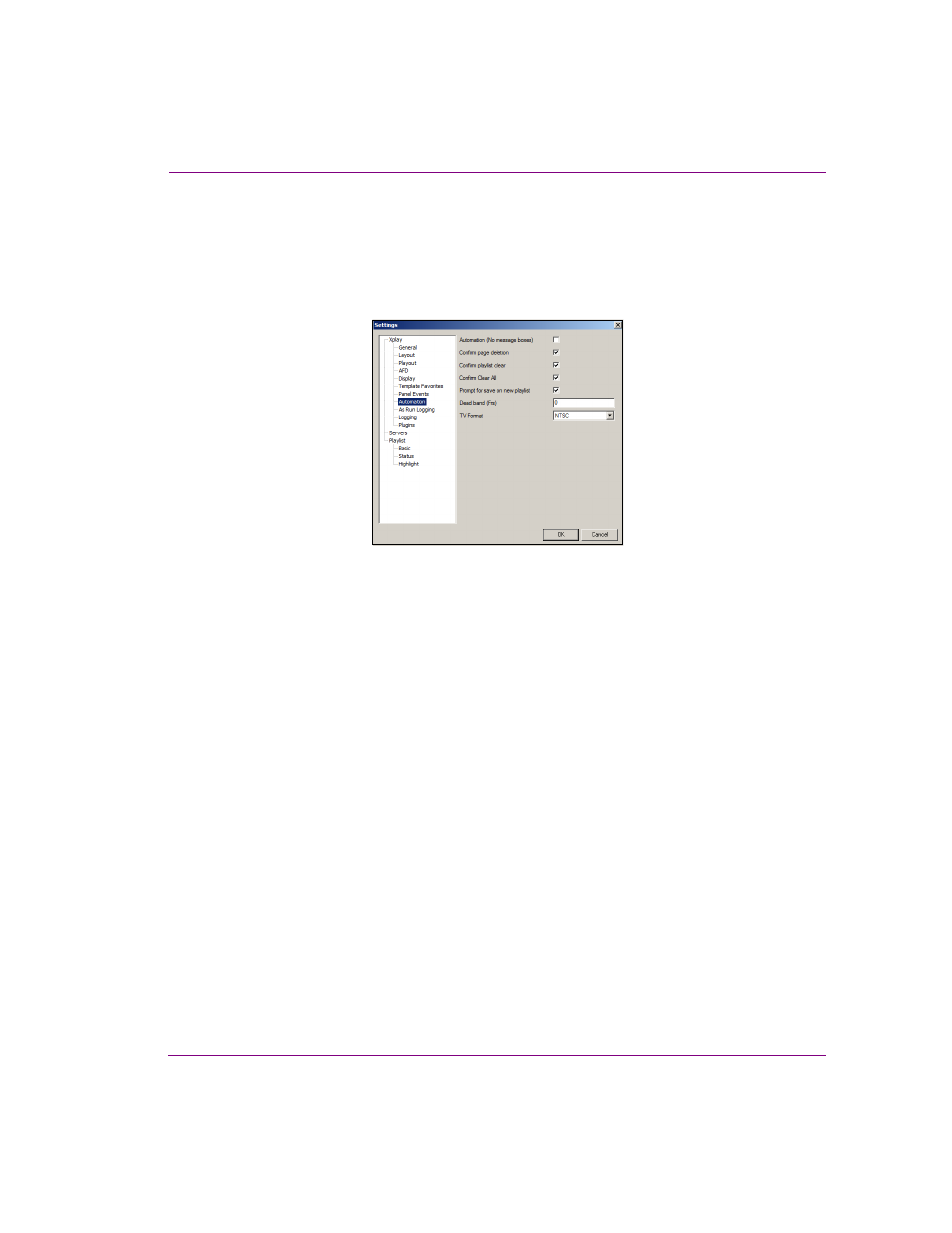Automation settings, Automation settings -25 – Grass Valley Xplay Vertigo Suite v.5.0 User Manual
Page 136

Xplay User Manual
6-25
Appendix A - Quick reference to Xplay’s menus and settings
Automation settings
Xplay automation settings allow you to determine whether or not you would like messages
to display while working in Xplay. While these messages may become redundant, they often
serve as an important confirmation step. Therefore, in most cases, we recommend that you
leave these settings selected.
Figure 6-8. Xplay’s Automation settings
•
Automation: When this setting is enabled, Xplay enters into Automation mode, by
ensuring that all modal message boxes are suppressed. This prevents Xplay from
being suspended when no operator is present to respond to a message box. Also note
that when this setting is enable, it supersedes the P
ROMPT
F
OR
C
LEAR
A
LL
, C
ONFIRM
PLAYLIST
CLEAR
and C
ONFIRM
PAGE
DELETION
settings.
When this setting is disabled, Xplay is not in Automation mode and therefore the
display of modal message boxes is permitted.
•
Confirm page deletion: Enable this setting to be prompted for confirmation whenever
you delete a page. Be sure that the A
UTOMATION
setting is disabled, otherwise it will
override this setting.
•
Confirm playlist clear: Enable this setting to be prompted for confirmation whenever
you clear a playlist. Be sure that the A
UTOMATION
setting is disabled, otherwise it will
override this setting.
•
Confirm Clear All: Enable this setting to be prompted for confirmation whenever you
clear all elements from a playlist. Be sure that the A
UTOMATION
setting is disabled,
otherwise it will override this setting.
•
Prompt for save on new playlist: Enable this setting to be prompted to save the
current playlist, if it is modified, before opening a new playlist. Be sure that the
A
UTOMATION
setting is disabled, otherwise it will override this setting.
•
Dead band (Frs): This setting is used in association with the A
UTOMATION
setting. It
specifies a time interval, in frames, within which commands are considered to occur at
the same time. For instance, an automation system may send commands that are
intended to be executed simultaneously. However, the commands may arrive at slightly
